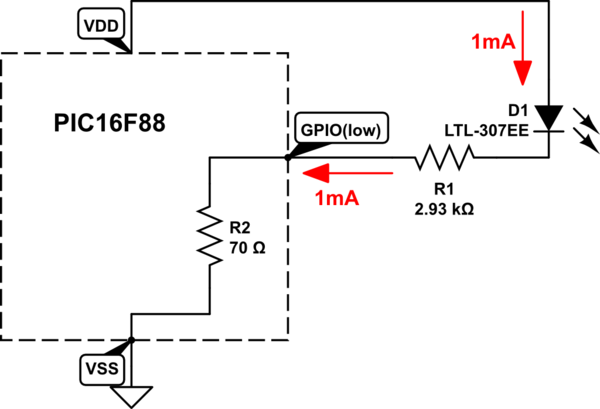I'm coming from the world of software, where I feel quite at home - I spend a lot of time writing code. I do not feel at home in the world of electronics and designing circuits. I really REALLY would like to learn more about electronics and designing circuits. I know I could be good at it, too, if only I had the intuition for it - which I'm so obviously and desperately lacking.
One project I thought up to try and bridge the gap between these two worlds is by programming a Microchip, specifically the PIC16F88 (not super attached to this model in particular, I just picked this one because from what I've heard it's relatively straight-forward to play around with). I'm sure that once it comes to writing code I'll be more comfortable, but first I'd like to build the circuit.
I'm guessing there won't be a lot of components involved. I was thinking the first thing I'd like to try and do is to simply have the microchip toggle an LED on and off at 1-second intervals. Cool, so now what? That's kind of where my problem starts.
My first impulse is to design the circuit the same way I'd design a simple LED-light-up-circuit. Pick the desired current (in the case of a single garden-variety LED ~20mA), determine the corresponding voltage drop from the LED's datasheet, subtract the voltage drop from the total voltage provided by the power supply / battery, and finally use Ohm's law to determine the required resistance to limit the current to the desired value.
Well, how much current does an IC draw? How much is too little, how much is too much? I realize an IC is a completely different animal from an LED, but that's where my understanding ends. Obviously there must be something wrong with my approach - the datasheet doesn't even mention current (at least not in any terms I can understand), however, other people are obviously able to design and power this chip just fine. I'm aware that how much current an IC draws depends on the IC and the application, and that there's things like Quiescent current and Input Sink / Output Source currents (just because I know these words doesn't mean I understand them fully) - so where do I find this information? Concrete numbers? Should I even be using this naive approach to build this more complex circuit? I know there isn't a conspiracy trying to hide information from me, but honestly sometimes in my journey through electronics and circuit design it feels as though there is hidden knowledge that's being denied to me.
If anyone can shed some light on my issue(s), or provide an intuition or general guidelines for knowing how to find the information you need to build a circuit, I would appreciate it. Also, if possible, explain it like I'm five years old.


